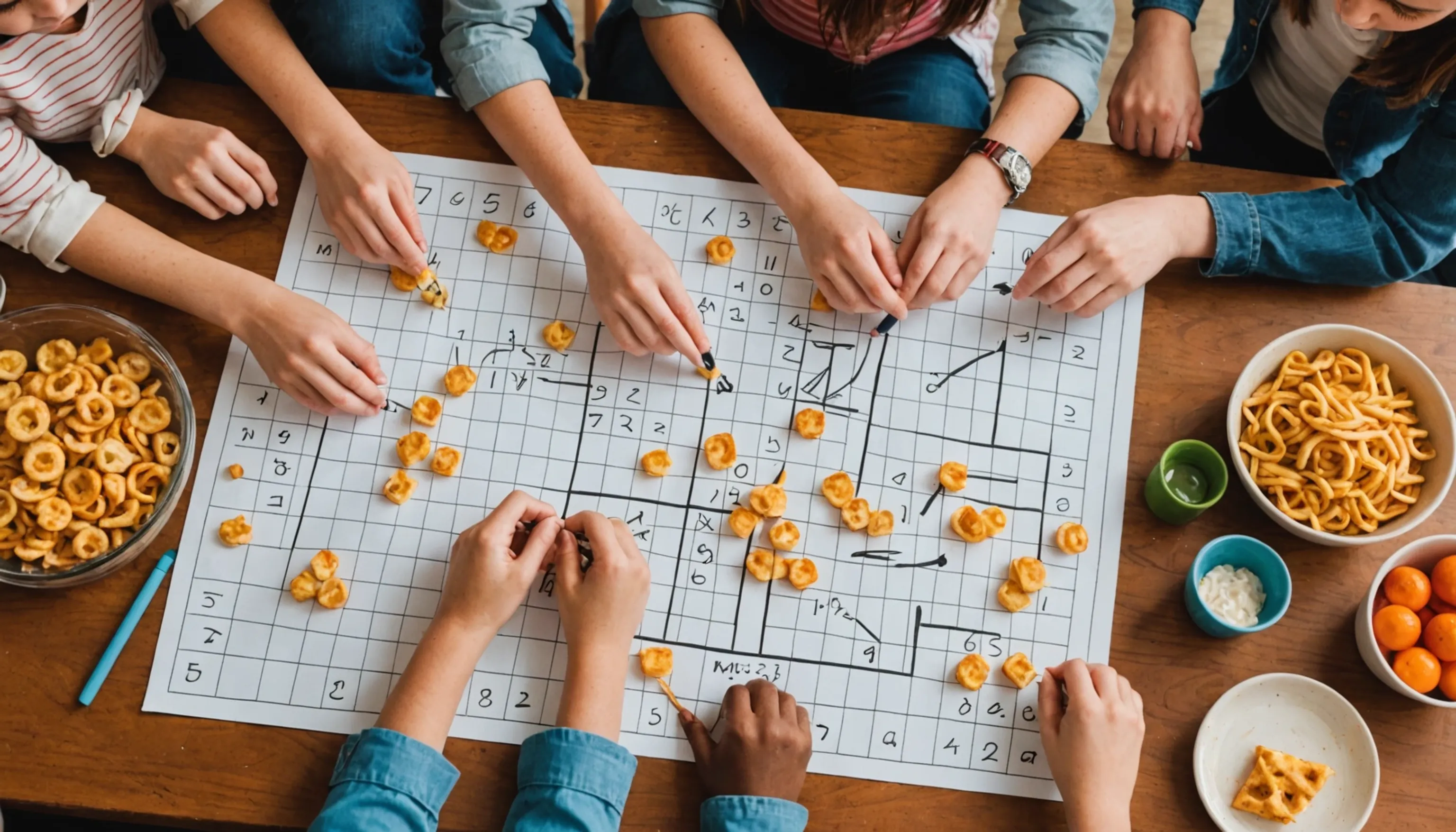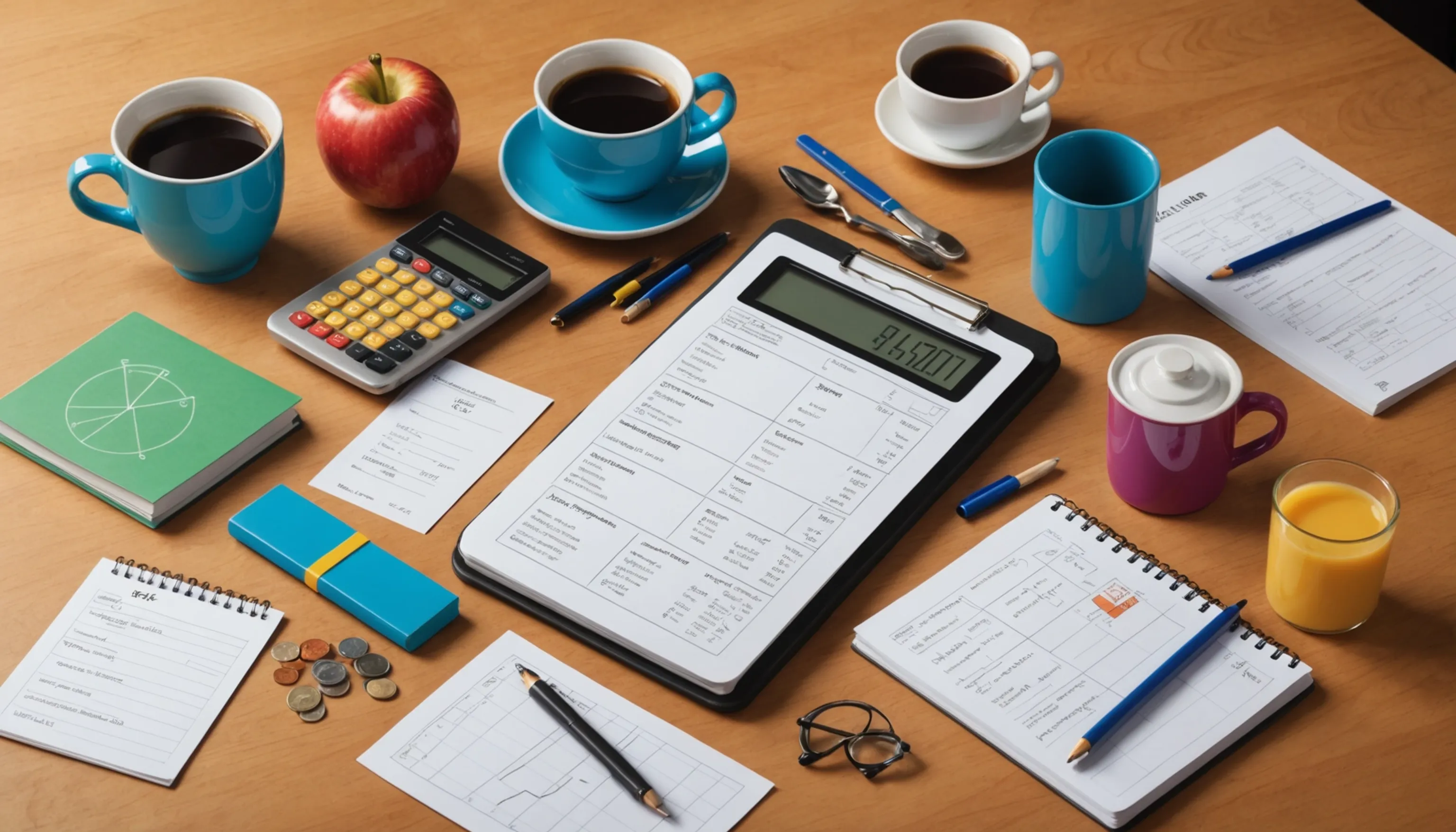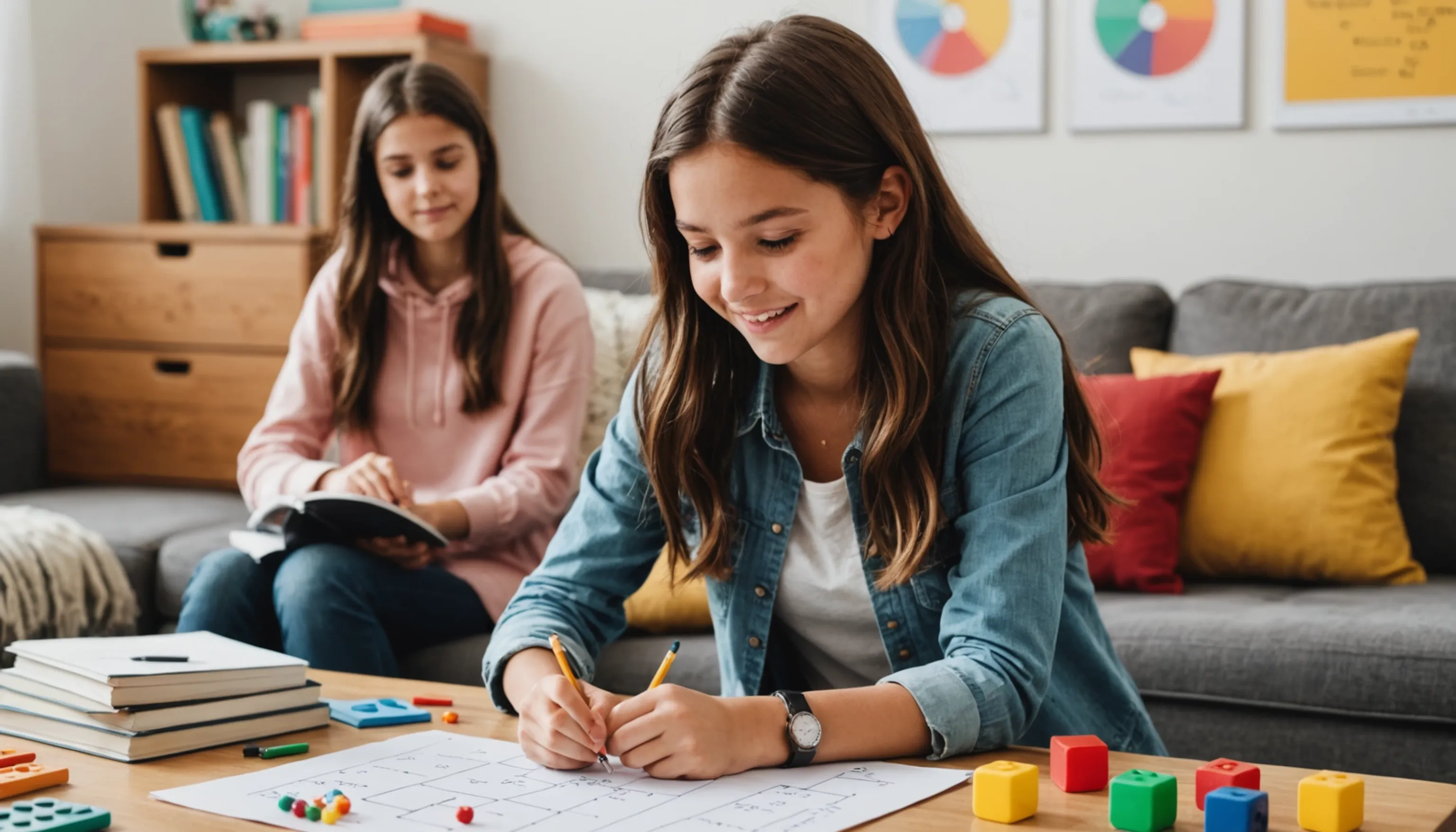Homeschool Math Activities and Games
 HvWHenry van Wagenberg
HvWHenry van Wagenberg
Engaging Homeschool Math Activities for Teens
Engaging homeschool math activities for teens can transform learning into an enjoyable experience. These activities focus on real-world applications, making math relevant and exciting. For example, you can incorporate cooking to teach fractions and measurements. Playing board games that involve math strategies can also enhance critical thinking skills.
Additionally, creating math scavenger hunts encourages problem-solving in an interactive way. Using art projects to explore geometric shapes or building structures can spark creativity while reinforcing mathematical concepts. Overall, these activities not only make math fun but also help teens develop essential skills for everyday life.
Fun Math Games to Boost Learning
Fun math games are an excellent way to boost learning while keeping teens engaged and motivated. These games can be played individually or in groups, making them perfect for homeschool environments. One popular game is Math Bingo, where players solve math problems to fill their bingo cards. This game encourages quick thinking and reinforces various math skills.
Another exciting option is Math Jeopardy, which can be customized to cover different topics such as algebra, geometry, or statistics. By competing against peers, students can reinforce their knowledge while enjoying a fun, competitive atmosphere.
Additionally, online platforms like Kahoot! and Prodigy offer interactive math games that adapt to each student's skill level, providing a personalized learning experience. These platforms often include rewards and levels, making practice feel more like a game than a chore.
Card games like 24 or Math Dice are also fantastic for practicing arithmetic skills. In 24, players must use four numbers and any combination of operations to reach the number 24. This game enhances mental math abilities and encourages creative problem-solving.
Moreover, incorporating math games into your homeschool routine not only enhances mathematical understanding but also fosters a love for learning. By integrating these fun activities, you can create a positive learning environment that encourages teens to explore and enjoy mathematics.
Hands-On Activities for Real-World Math Skills
Hands-on activities are vital for developing real-world math skills in teens, as they provide practical applications of mathematical concepts. One effective approach is to involve them in budgeting activities. For example, ask them to plan a family event, such as a birthday party or a weekend trip. They can calculate costs for food, decorations, and activities, enhancing their understanding of addition, subtraction, and percentage calculations.
Another engaging activity is conducting a mini-business project. Encourage teens to create a product or service, set prices, and manage a budget. This experience teaches them about profit margins, cost analysis, and basic accounting skills.
Gardening is another excellent hands-on activity that incorporates math. Teens can measure garden plots, calculate the area for planting, and monitor growth over time, applying skills such as measurement and estimation.
Cooking and baking also offer opportunities to practice math. Teens can follow recipes, adjusting ingredient quantities based on serving sizes. This practice reinforces fractions and proportions, making math relevant in everyday situations.
Lastly, engaging in DIY projects, such as building furniture or home decor, requires measurement and geometry. By calculating dimensions and angles, teens learn to apply mathematical concepts in practical contexts.
Overall, these hands-on activities not only make math more enjoyable but also demonstrate its significance in daily life, preparing teens for future challenges.

Using Technology for Interactive Math Learning
Using technology for interactive math learning can significantly enhance the educational experience for teens. With the rise of digital tools, students can engage with math concepts in innovative ways that cater to different learning styles. One effective approach is to incorporate educational apps and websites that offer interactive math exercises. Platforms like Khan Academy and IXL provide personalized learning paths, allowing students to progress at their own pace while receiving instant feedback.
Online math games, such as those found on Prodigy or Mathletics, turn learning into a fun experience. These platforms often include gamification elements, such as rewards and challenges, which motivate students to practice regularly and improve their skills.
Additionally, virtual classrooms and video conferencing tools like Zoom or Google Meet enable collaborative learning. Teens can work together on math problems in real-time, sharing screens and discussing solutions. This interactive environment fosters peer-to-peer learning, which can be highly beneficial for understanding complex concepts.
Moreover, using graphing calculators and math software, such as GeoGebra, allows students to visualize mathematical concepts. They can explore functions, create graphs, and perform calculations, making abstract ideas more concrete.
Overall, integrating technology into math learning not only makes the process more engaging but also prepares students for a tech-driven world. By utilizing these resources, teens can build confidence and proficiency in mathematics, essential skills for their future endeavors.
Creative Ways to Teach Algebra at Home
Teaching algebra at home can be both fun and effective with creative approaches. One method is to use everyday objects to illustrate algebraic concepts. For example, use fruit or toys to represent variables in equations, making abstract ideas tangible. Another engaging technique is to incorporate storytelling; create math problems that revolve around characters and scenarios your teen enjoys.
Additionally, you can turn algebra practice into a game. Use online platforms like Kahoot! to create quizzes or play interactive algebra games that reinforce skills. These creative strategies can make learning algebra enjoyable and memorable.
Algebra Puzzles and Brain Teasers
Algebra puzzles and brain teasers are excellent tools for enhancing mathematical thinking and problem-solving skills in teens. These engaging activities not only make learning enjoyable but also reinforce algebraic concepts in a fun way. One popular type of puzzle is the algebra crossword, where students fill in squares with answers to algebraic equations or terms, combining vocabulary with problem-solving.
Another effective method is using logic puzzles that require algebraic reasoning. For instance, students can solve mystery scenarios where they need to determine the values of variables based on given clues. This type of critical thinking fosters a deeper understanding of algebraic relationships.
Online resources, such as Brilliant.org and MathIsFun.com, offer a variety of algebra puzzles and interactive challenges. These platforms allow students to practice their skills while receiving immediate feedback, which is essential for learning.
Additionally, creating algebra riddles can be a fun classroom or home activity. Encourage teens to devise their own riddles using algebraic expressions, which helps them internalize concepts while fostering creativity.
Lastly, consider incorporating escape room-style challenges where teens must solve algebraic problems to unlock clues and progress. This immersive approach turns learning into an adventure, making algebra more relatable and exciting. Overall, algebra puzzles and brain teasers offer a dynamic way to develop essential math skills while keeping students engaged.

Real-Life Applications of Algebra
Understanding the real-life applications of algebra can significantly enhance teens' appreciation for this branch of mathematics. Algebra is not just a subject confined to textbooks; it plays a crucial role in various everyday situations. For instance, when planning a budget, teens can use algebraic equations to calculate expenses and savings. By setting variables for different categories, they can determine how much they can spend while still meeting their financial goals.
Additionally, algebra is essential in fields like engineering and architecture. When designing structures, professionals use algebraic formulas to calculate dimensions, materials, and costs, ensuring stability and safety. By introducing teens to these careers, they can see the practical importance of algebra in shaping the world around them.
Another common application is in cooking and baking. Recipes often require adjustments based on servings, leading to the use of proportions and ratios. Teens can practice algebra by scaling recipes up or down, reinforcing their understanding of fractions and variables.
Moreover, sports statistics provide an engaging way to learn algebra. Analyzing player performance through averages and predictions helps students see how algebra applies in calculating scores and probabilities.
Finally, technology and programming rely heavily on algebraic concepts. As teens explore coding, they will encounter variables and functions, highlighting the importance of algebra in the digital age. Overall, showcasing these real-life applications can inspire teens to engage with algebra and understand its relevance beyond the classroom.
Online Resources for Algebra Practice
Online resources for algebra practice are invaluable tools for teens looking to strengthen their math skills. With a plethora of options available, students can find interactive platforms that cater to various learning styles. One highly recommended resource is Khan Academy, which offers comprehensive video tutorials and practice exercises tailored to different algebra topics. The adaptive learning paths help students progress at their own pace while tracking their performance.
Another excellent platform is IXL, which provides a personalized learning experience by adjusting the difficulty of questions based on student responses. This allows for targeted practice, ensuring that teens can focus on areas where they need improvement. Each question is accompanied by detailed explanations, helping students understand their mistakes.
Quizlet is also a fantastic resource, enabling students to create flashcards and practice quizzes to reinforce algebra concepts. Users can access pre-made sets covering various topics, making it easy to review important terms and equations.
Additionally, websites like Brilliant.org offer interactive problem-solving challenges that encourage critical thinking. These challenges present real-world scenarios requiring algebraic reasoning, making learning engaging and relevant.
Lastly, Prodigy Math gamifies math practice, allowing students to embark on quests and earn rewards while solving algebra problems. This fun approach keeps teens motivated and engaged. Overall, these online resources provide diverse and effective methods for practicing algebra, catering to every learner's needs.
Exploring Geometry through Activities
Exploring geometry through activities is a dynamic way to help teens grasp complex concepts while having fun. Hands-on projects, such as building models of geometric shapes, allow students to visualize dimensions and understand properties like volume and surface area. For example, creating origami can teach angles and symmetry while enhancing fine motor skills.
Outdoor activities, like measuring the height of a tree using shadows, connect geometry to real-world applications. Students can apply the principles of similar triangles in practical scenarios.
Additionally, integrating technology through apps that allow for geometric transformations can further engage students. Programs like GeoGebra provide interactive experiences where teens can experiment with shapes, angles, and theorems.
Finally, organizing scavenger hunts that involve finding and measuring geometric shapes in their environment can make learning exciting. These activities not only reinforce geometric concepts but also foster creativity and critical thinking.
Geometry Games for Visual Learning
Geometry games for visual learning are an effective way to engage teens while reinforcing essential geometric concepts. These games not only make learning enjoyable but also cater to various learning styles, particularly for those who thrive on visual stimuli. One popular option is GeoGuessr, which challenges players to identify locations based on satellite images, promoting spatial awareness and understanding of geometric shapes in real-world contexts.
Another engaging game is Math Playground’s Geometry Games, which offers a range of interactive activities that cover topics like angles, shapes, and area. Students can explore concepts through puzzles and challenges that require critical thinking and problem-solving skills.
Additionally, using online platforms like Prodigy Math incorporates elements of gaming into geometry practice. Students embark on quests while solving geometry problems, making the learning process feel like an adventure.
Board games like Blokus encourage strategic thinking and spatial reasoning, as players must fit geometric pieces together on a grid. This fosters an understanding of shape properties and spatial relationships.
Finally, incorporating virtual reality (VR) experiences can take visual learning to the next level. Programs like Google Expeditions allow students to explore geometric concepts in immersive environments, making learning unforgettable. Overall, these games enhance geometry education by providing visual, interactive experiences that keep teens engaged and motivated.
Hands-On Geometry Projects
Hands-on geometry projects are a fantastic way for teens to explore geometric concepts in a tangible way. These projects not only enhance understanding but also encourage creativity and critical thinking. Here are some engaging ideas for hands-on geometry projects:
- Geometric Art: Students can create artwork using geometric shapes. This could involve:
- Drawing and coloring patterns based on symmetry and tessellations.
- Using materials like paper, fabric, or beads to create 3D geometric sculptures.
- Building Models: Constructing models of geometric shapes helps students visualize dimensions. Projects can include:
- Creating a scale model of a building using cardboard or straws.
- Building geometric solids like pyramids or prisms using marshmallows and toothpicks.
- Geometry in Nature: Exploring geometric patterns found in nature can deepen understanding. Activities may involve:
- Taking photographs of natural objects that showcase geometric shapes, such as flowers or shells.
- Creating a nature journal that documents these findings with sketches and descriptions.
Additionally, students can use software like GeoGebra for virtual geometry projects. They can design shapes and explore transformations, enhancing their understanding of geometric relationships. Overall, hands-on geometry projects make learning interactive and enjoyable, fostering a deeper appreciation for the subject.
